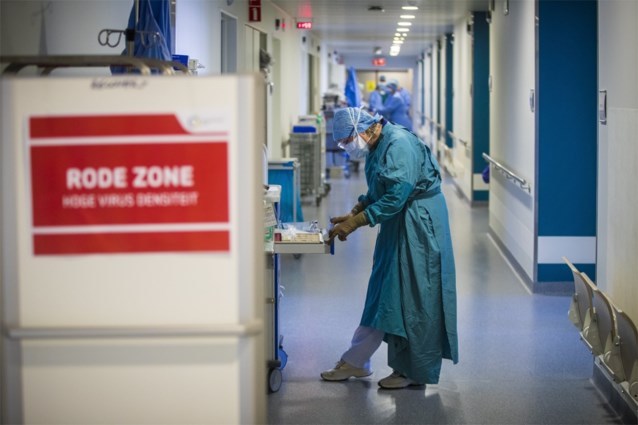The number of new Covid-19 infections recently started rising again in Belgium, resulting in the number of people hospitalised due to the virus once again surpassing 1,000.
In the last seven days, an average of 87.9 patients suffering from Covid-19 was admitted to hospitals each day — up by 32% from the previous seven days, according to figures published by the Sciensano Institute of Public Health on Friday.
The figure reflects how many people are hospitalised directly because of the virus, not those who are admitted with another condition and then also test positive for Covid-19.
On Thursday, 1,083 people were in Belgian hospitals due to an infection, up by some 200 people since ten days ago, while the number of people being treated in intensive care has started to slowly increase and now sits at 69.
This number covers all patients who tested positive for Covid-19, including those who were first admitted with a different condition.
Cases and deaths
Between 14 and 20 June, an average of 3,049 new daily Covid-19 infections was identified: a 25% increase from the previous seven days. At the end of May, this figure dropped to below 1,300.
The average number of tests taken per day remained stable, around 11,000, but the positivity rate has increased to 26.7%, meaning more than one in four tests has a positive result.

Credit: Belga
Omicron BA.5, which accounted for 42.2% of the infections last week, has become dominant in the meantime, accounting for more than half of all infections. BA.5 is no more or less infectious than the other subtypes of Omicron, but it does succeed very well in circumventing people’s accumulated immunity.
During the same week, an average of 5.1 patients suffering from Covid-19 died on a daily basis, down by 8% from the previous week. The total number of deaths in Belgium since the start of the pandemic amounts to 31,883.
This figure includes people who died of another cause of death, but who happened to be infected, meaning there may be an overestimate of Covid-19 deaths that were caused by the virus.
Reproduction rate, incidence, and total vaccinations
The reproduction rate has now risen to 1.20, the highest it has been in months. This figure represents the average number of people that contract the virus from each infected person. When it is above 1, it means that the epidemic is gaining ground in Belgium.
Related News
- EMA recommends new Valneva Covid-19 vaccine for use
- New Omicron sub-variant now dominant in Belgium: What does this mean?
- 30% of hospitalised Covid patients have heart issues one year later
The incidence (the number of new cases per 100,000 inhabitants) also continues to rise and now sits at 331 over the past 14 days.
As of Tuesday, more than 9.14 million people are fully vaccinated – 89% of Belgium's adult population and 78% of the total population. Meanwhile, almost 7.16 million people have received a booster dose of the vaccine, representing 76% of over-18s and 62% of the entire population.
The frequency of Sciensano's update on the epidemiological situation has also been adjusted: although the institute will "continue to closely monitor the Covid-19 situation in the country," it is only publishing an update twice a week – on Tuesday and Friday – rather than on a daily basis.

